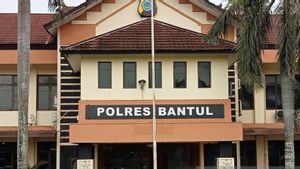JAKARTA - Coal waste in the form of fly ash and bottom ash (FABA) has become a widely discussed issue after the issuance of FABA PLTU from the B3 waste category to the non-B3 waste category in PP number 22 of 2021.
Fly ash itself is ash resulting from burning coal that floats upwards, while bottom ash is ash from combustion that falls down. There are several FABA contents such as carbon, nitrogen and silica.
UNAIR FST environmental engineering lecturer, Nita Citrasari revealed several benefits of coal waste. According to him, coal waste can be used as a raw material or a raw material substitution for several building products.
According to him, such as Portland cement, paving blocks, concrete blocks, and road foundations. The application of these activities is also known as waste to material.
"The stages of FABA processing are carried out according to the type of product to be made," said Nita, quoted from the UNAIR website, Tuesday, March 16.
These stages, among others, are preceded by analyzing the characteristics of the FABA to be used. Then, determine the composition of the raw material according to the type of product desired and the characteristics of FABA as a component of the product raw material.
After that, product manufacturing can be done by means of solidification and stabilization. After being made, the product also needs to be tested for standardization.
"Product feasibility is determined in accordance with product standardization, for example for paving blocks (concrete bricks) using SNI 03-0691-1996," he explained.
FABA from PLTU with minimal circulating fluidized bed (CFB) boliler technology if using PP number 22 of 2021 article 459 paragraph 3 where FABA is included in the category of non-B3 waste then if the product passes the feasibility test, the product can be used immediately.
However, if using PP 101/2014 where FABA is included in B3 waste, after passing the feasibility test, it still has to continue with the toxicity characteristic leaching procedure test to ensure that the leaching results of the product are safe for the environment.
Then, the presence of silica in FABA can also make FABA used as a raw material or substitute for raw materials such as Portland cement, paving, and so on. However, the presence of this silica can also be harvested by means of an extraction process.
"The extracted silica can be used as raw material for the silica membrane, silica gel adsorbent, and so on," concluded Nita.
The English, Chinese, Japanese, Arabic, and French versions are automatically generated by the AI. So there may still be inaccuracies in translating, please always see Indonesian as our main language. (system supported by DigitalSiber.id)













